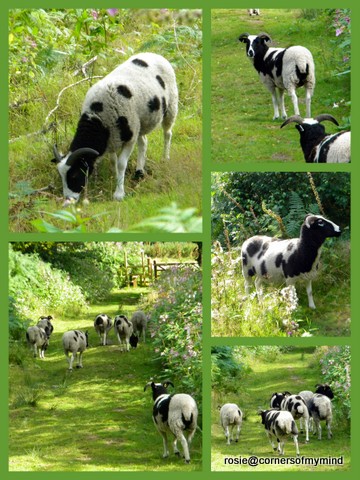When we arrived in the town we parked near the Museum and Library and set out on foot down one of the ancient alleyways which lead onto the wide main street. There is a car park a little closer to the castle but it was full and as we wanted to pop into the museum later in the day we parked close by.
We crossed the busy main street and cut through the brightly festooned covered market
The castle ruins looked wonderful in the sunshine. We had visited before but many years ago so it was time for a re-visit.
In the photos above and below you can see both the kitchen tower and the main tower.
We seemed to have the place to ourselves although once we got in amongst the walls of the ruins one or two people could be seen gazing upwards or heard as their voices echoed around the dusty, shadowed corners.
The property began as a manor house in the 12th century and reached castle status in the 15th century.
In the 14th century the manor was in the hands of the le Zouch family who were of Breton descent. In 1399 with the death of the last remaining direct heir of this family there began a protracted dispute over Ashby. In 1461 it came into the hands of James Butler, Earl of Ormond and Earl of Wiltshire. He was executed after the Battle of Towton, one of the bloodiest battles of the Wars of the Roses. Ashby Castle was then given, along with many other tracts of land, to William, Lord Hastings, son of Sir Leonard Hastings of nearby Kirby Muxloe, who was in favour with King Edward IV and rose to high status in his court. In 1472 he received licence to fortify four of his manors. Ashby being one of them.
Above is the arched passage between the great hall and the kitchens. We decided to climb up the steps of the great tower first. My knees made it to the top.
Halfway up the ninety odd steps into main tower you can stop to catch your breath and look at the stone shields on the wall and the graffiti too.
There is also a seat on which to rest awhile.
There were wonderful views across the town in all directions.
The Parish church of St Helen's
Looking down on the kitchen tower which was our next destination
There were lots of fireplaces, wells and ovens in this part of the ruins and it was easy to imagine the sounds, the heat and the smells emanating from what would have been a hive of industry.
Above you can see a cauldron stand in one of the surviving hearths and a bread oven at the side.
We couldn't go any further up the tower but we could go down into the undercroft
and through the tunnel which lead us back to the foot of the great tower.
It is thought that the tunnel was put in place during the English Civil War. During this war Ashby was an important Royalist base under the control of Henry Hastings, Lord Loughborough. There is an interesting display in the Museum about Ashby in the years of the Civil War where I found a reference to the tunnel in a letter written by a Parliamentarian in Leicester.
'Sir, our forces are gone with Derby horse towards Ashby, but the enemy are very strong and their works good, they have vaults under the ground through which they can go from one fort to another at their pleasure'
The castle finally surrendered in 1646 and the fortifications were removed. Some of the remaining buildings were incorporated into a house called Ashby Place which was itself demolished in 1830. In the 19th century the town and castle ruins became a visitor attraction after Sir Walter Scott set a scene of his novel Ivanhoe there.
The Chapel
Earthworks and garden
The castle has been maintained and cared for by English Heritage since 1983.
Here is a - link - to more information
















































